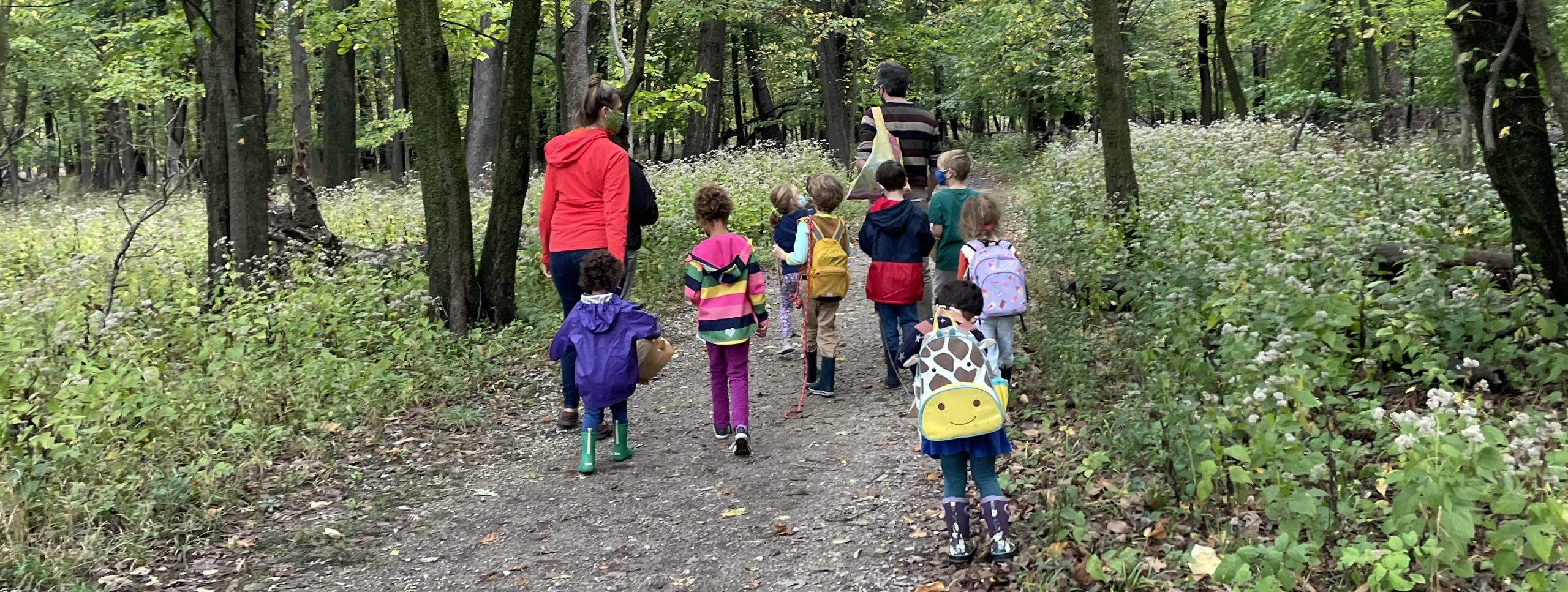Today we dove into rivers! We opened with an activity drawn from here, adapted for the younger crowd… We joined hands and made ourselves into a simple, winding river. We talked about the ways in which rivers move (and some silly ways in which they don’t). Then we arranged ourselves into a (slightly) more accurate river: three kids stood up on the top steps, as headwater streams. (We brought up how rivers always, always flow down.) More kids (positioned on lower steps) joined the river system, touching fingertips with those already there, joining streams together, until all the water was flowing through one point. That one point, we noted, had all the water from all the streams going through it. We used our river system to introduce the concepts of a tributary (a smaller river flowing into a larger river) and a watershed (the area of land that drains into a particular river).
Then we asked the lesson’s big question: if a drop of water falls on Thatcher Woods, where does it go? (I found my answer here, and I’d definitely encourage you to try it out!)
So we hiked west from the pavilion into the woods and met up with the Des Plaines River. There was a chair in it; we concluded that it must be migrating upriver. I told them that the Des Plaines River is just a few feet wide at its origin up in Wisconsin, but by the time it reaches us it’s grown to 90′ or so. Then I broke out my maps: first showing them the length of the Des Plaines river, then (zooming out) the Illinois River (of which the Des Plaines is a tributary), and finally we used an atlas to follow the Mississippi River down into the Gulf of Mexico. That brought up our final river word: estuary, where the freshwater stream of the river meets the saltwater tide of the ocean. I recited the first stanza of this poem, and we marched back.

